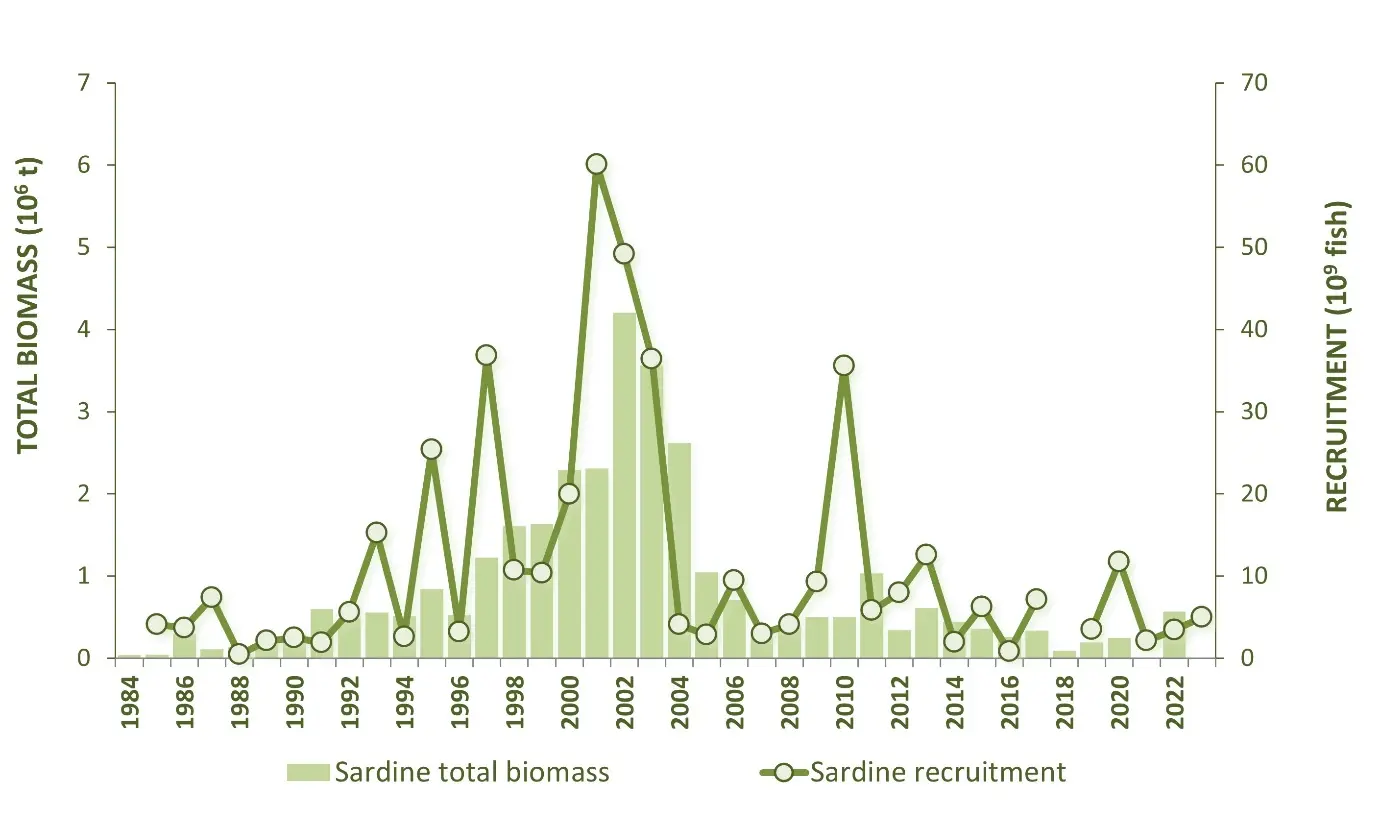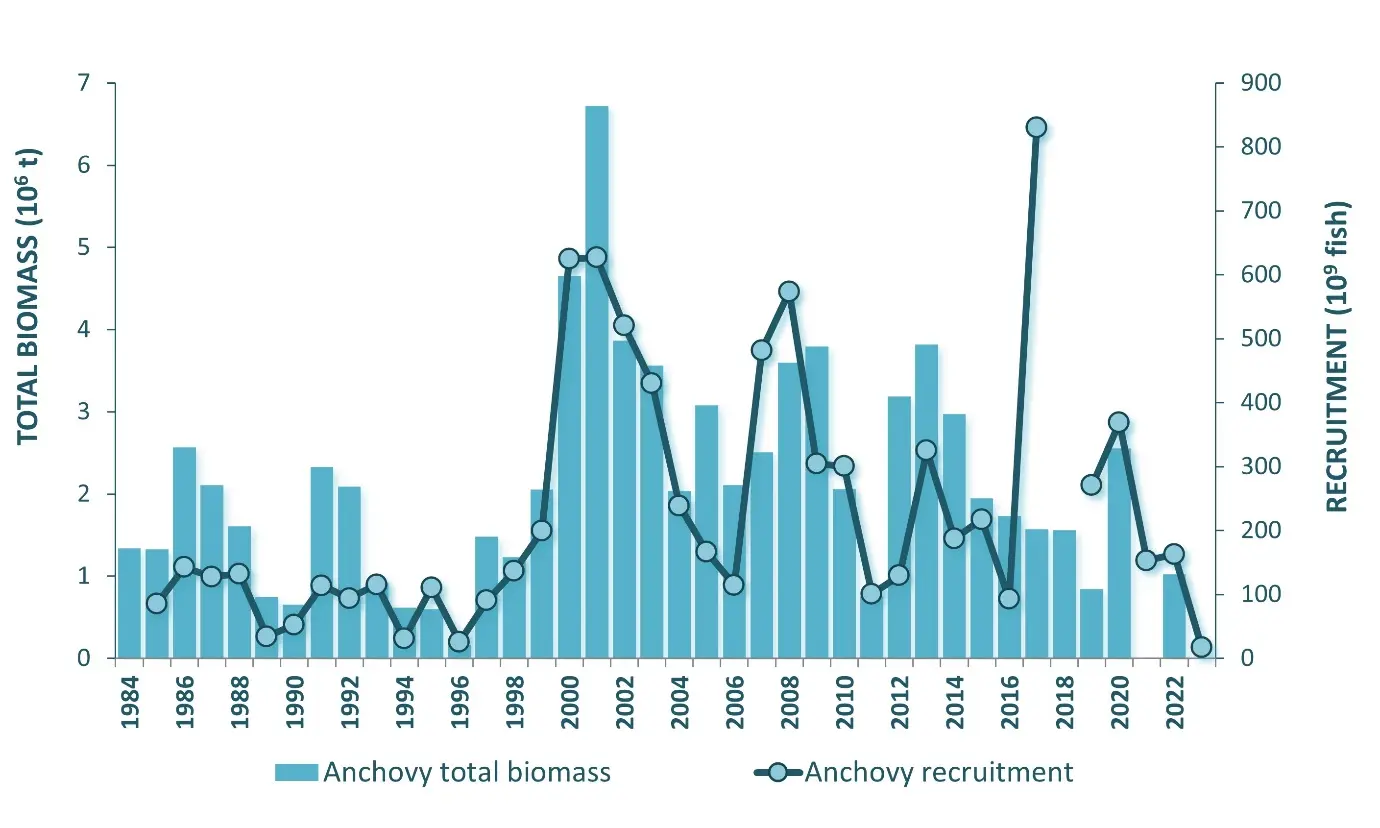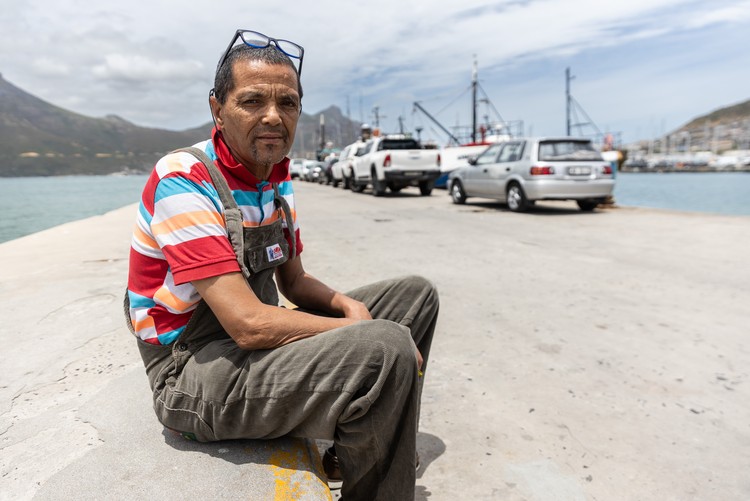Cape fishers worried about declining fish populations
“The South African story has already been written in Namibia” where there was a three-year moratorium on sardine and anchovy catch because stocks were so low
Mario Jacobs has been doing commercial fishing for decades. Photo: Ashraf Hendricks
Mario Jacobs is worried. He has had a commercial fishing license since 1998, and has an annual quota for catching sardines and anchovies. But sardine stocks have been in poor shape for years and 2023 was the worst year on record for anchovy stocks.
Jacobs, who is from Hangberg in Hout Bay, says his business has been suffering for years. He is battling to access funds to buy a new boat and to cover the costs of his crew. The dwindling catch is making it difficult to keep his head above water.
The Department of Forestry, Fisheries and the Environment (DFFE) measures sardine and anchovy stocks biannually with a total biomass survey and a recruitment survey. Recruitment refers to new fish entering the fisheries.
The DFFE states that sardine recruitment is very low but has shown some signs of increasing in recent years. The worst point in 30 years occurred in 2016 when it was estimated there were fewer than 1 billion sardines. The situation has improved since then but remained below average, so the DFFE is being conservative with its quotas.
In a 2023 report the DFFE stated the current low sardine catches meant major South Africa canning facilities had to source the bulk of their sardines from Morocco and other sources in order to stay profitable.
The anchovy situation is also troubling. Anchovy recruitment in 2021 and 2022 was below average and the 2023 recruitment is “the lowest recorded to date”.
Fish stocks change dramatically year-by-year so not too much can be read into a single-year estimate, but as the graphs shows, since the mid-2000s the sardine and anchovy catches have been much lower on average.


The above graphs were provided by the DFFE. The top graph shows the general decline of sardine biomass and recruitment since the mid-2000s though there is substantial year-on-year fluctuation. The bottom graph shows anchovy biomass and recruitment. The picture is generally much better for anchovy but in 2023 there was a massive drop and this has fishers and scientists worried.
Jim (name changed) is a skipper from Hout Bay. He works on contract for a big fishing company and has been in the industry for about 40 years. He confirmed their recent sardine catches have been poor, particularly since 2004.
He says it’s important to have regulations that protect the species, such as not being able to catch them when they’re too small.
“Us fishermen suffer but that’s just something we have to live with. Instead of decreasing the species, rather protect it. If we’re going to catch the small sardines, in a couple of years time, there will be no sardines left,” he says.
Craig Smith, senior manager for the marine portfolio at World Wildlife Fund, South Africa, says it is “very worrying” that anchovy numbers are dropping because usually when sardine numbers are very low, anchovy numbers are at least good.
Smith says the likely causes are climate change and overfishing.
The DFFE told GroundUp that “the actual reasons or causes of sardine decline are unknown” but then suggested “environmental variability” and “climate change” have “likely contributed”.
Smith says we need to be cautious of heading in the same direction as Namibia, which had a sardine fishing industry much larger than South Africa’s. From 2018 to 2020, the Namibian government placed a moratorium on catching sardines because of a complete collapse in fish stock.
“The South African story has already been written in Namibia,” says Smith.
Smith also points to the declining numbers of birds such the African penguin and the Cape Gannet which feed on sardines and anchovies. These are “very useful indicators of the health of the ecosystem” and “directly correlated to the abundance of sardines”.
Last year, the DFFE decided to exclude fishing around key penguin foraging areas from 1 September 2023 for a period of 10 years. This followed the decline of the African penguin population since 2005, according to the DFFE’s expert review panel report.
Jacobs did not manage to fish his quota this past year. And Jim says the company he contracts to also did not catch their quota. “It was a weak season,” says Jim.
Jim is waiting to see how the anchovy catch will turn out this season. Anchovies mostly come from the end of February, he says. “We’re still waiting.”
Next: Dunoon top achiever dreams of studying chemical engineering
Previous: Protesters bring Louis Trichardt to a standstill for one hour
© 2024 GroundUp. This article is licensed under a Creative Commons Attribution-NoDerivatives 4.0 International License.
You may republish this article, so long as you credit the authors and GroundUp, and do not change the text. Please include a link back to the original article.
We put an invisible pixel in the article so that we can count traffic to republishers. All analytics tools are solely on our servers. We do not give our logs to any third party. Logs are deleted after two weeks. We do not use any IP address identifying information except to count regional traffic. We are solely interested in counting hits, not tracking users. If you republish, please do not delete the invisible pixel.



